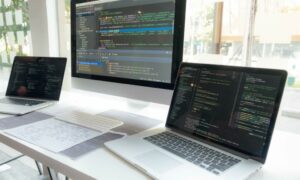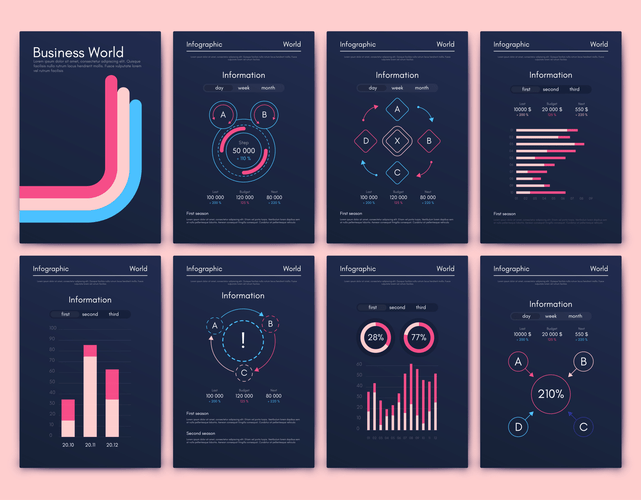The Worldmap panel plugin visualizes the time-series metric over the world map and is suitable for organizations with operations in different geographical locations. This allows them to visualize the data based on countries, cities, regions, etc. along with the coordinates for the different endpoints. Usually, the size and color of the circle representing each monitored endpoint may vary based on the value of the data and other variables. Compile with mage and restart Grafana for the change would take effect. I have added a log line in the code to print the results so I can see that data is transferred between the frontend to the backend.
This allows you to easily visualize time series metrics through various easy-to-understand and actionable reports. The Grafana open-source solution ships with basic features but is highly flexible and customizable. Initially, it does not have much functionality, but its plugin architecture makes it highly expandable. Adding the relevant plugins enables you to customize it to meet your specific needs. Of course, to work with the K8s API server, we need a user with read only access.
Create dynamic panels using data frames
To use data from queries in your panel, you need to set up a data source. If you don’t have one available, you can use the TestData data source while developing. In the grafana plugin development previous step, you changed the fill color of the circle in the code. Let’s change the code so that the plugin user can configure the color from the panel editor.

You can also navigate between dashboards or drill down to more detailed reports. Grafana is a powerful, open-source visualization solution for a wide range of data sources and formats. The monitoring solution provides businesses with useful visual insights into how their infrastructure, applications, servers, and other assets are performing. Grafana is a powerful open-source visualization solution that provides valuable insights into the performance of infrastructure, applications, and servers. With customizable visualizations and support for diverse data sources and formats, Grafana allows IT teams to collect and visualize data from various sources. In this tutorial you built a complete data source plugin for Grafana that uses a query editor to control what data to visualize.
Different Types of Grafana Plugins
When we update the plugin SDK, those plugins that use an older version of the SDK should still work with Grafana. However, these older plugins may be unable to use the new features and capabilities we introduce in updated SDK versions. The plugin SDK provides a high-level framework with APIs, utilities, and tooling.

The plugin can group various metrics into a composite metric that provides an overview of the health status of the entire system. Additionally, Polystat has the option to drill down to more detailed dashboards for individual hexagons or metrics. Kubernetes is a platform that automates the deployment and management of applications in container environments. The Grafana Kubernetes plugin enables you to see various cluster, node, pod, and container metrics, including memory, CPU, disk capacity, usage, and other metrics. It also allows you to filter and find relevant pod metrics, among many other capabilities.
Apache ECharts Panel 5.1.0
If you haven’t done so, run the Grafana server, if you are using docker, you can use docker restart grafana. A single source for documentation on all of Percona’s leading,
open-source software. All of Percona’s open-source software products, in one place, to
download as much or as little as you need. Another useful tool in the D3 toolbox is the ability to generate axes. Adding axes to our chart makes it easier for the user to understand the differences between each bar.

In this step, you’ll change the code in the starter plugin to return a sine wave. The term target originates from Graphite, and the earlier days of Grafana when Graphite was the only supported data source. As Grafana gained support for more data sources, the term “target” became synonymous with any type of query. It accepts a query from the user, retrieves the data from an external database, and returns the data in a format that Grafana recognizes. In this step, you’ll create one circle per series, each with a radius equal to the last value in the series. It allows pull-requests to be augmented by so called Actions to run automated steps on the proposed changes to the source code.
The Main Elements of Grafana
By using the SDK, you can avoid the need to learn the details of the plugin protocol and RPC communication protocol, so you don’t have to manage either one. In fact, much of what you can accomplish with D3 you can already do with React. So before we start looking at D3, let’s see how you can create an SVG from data, using only React. When editing a data source in Grafana’s UI, you can Save & Test to verify that it works as expected.
- Next, we’ll look at how you can control the frequency of the sine wave by defining a query.
- Unfortunately, the fee ended up being so cost prohibitive that it was out of reach for us as a small startup company and we had to abandon our catalog and cloud ambitions.
- It supports Data sources like PostgreSQL, influxDB, MySQL, Google BigQuery, Oracle and Azure Data Explorer, and many more.
- The plugin SDK provides a high-level framework with APIs, utilities, and tooling.
- Alternatively, you can book a demo and tell us about your monitoring needs.
- Grafana supports a wide range of data sources, including Prometheus, MySQL, and even Datadog.
- That meant that Time Series Multi was a natural choice for that.
Just like query editor, the form field in the config editor calls the registered listener whenever the value changes. Since we’re not actually connecting to an external database in our sine wave example, we don’t really need many options. To show you how you can add an option however, we’re going to add the wave resolution as an option. Even though we still support plugins written in AngularJS, we highly recommend that you write new plugins using ReactJS. Since Grafana only loads plugins on start-up, you need to restart the container whenever you add or remove a plugin.
current community
The first step in designing your query editor is to define its query model. MySQL and PostgreSQL use SQL, while Prometheus has its own query language, called PromQL. No matter what query language your databases are using, Grafana lets you build support for it. Let’s see how to create and return a data frame from the query method.

A Frontend plugin where all the querying is done via the clients browser and a Backend plugin where querying is completed by the server. You can accomplish many things with a frontend plugin but if you https://www.globalcloudteam.com/ want to enable alerting a backend plugin is required. The backend plugin can then run the specified alerting queries periodically based on your configured timing and trigger an alert as required.
Search code, repositories, users, issues, pull requests…
Metrist ended up with a fully functional and complete Grafana data source plugin. It wasn’t difficult to put together thanks to the Grafana team’s tooling and was largely a pleasant experience. We did run into a few roadblocks but were able to navigate around them by exploring how similar roadblocks had been circumvented by other plugins. All data returned from a Datasource plugin must adhere to the Dataframe formats supported by Grafana itself.
